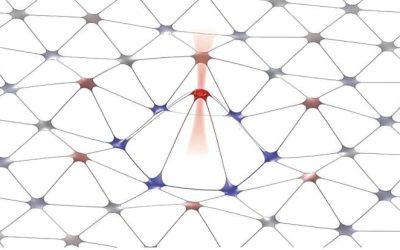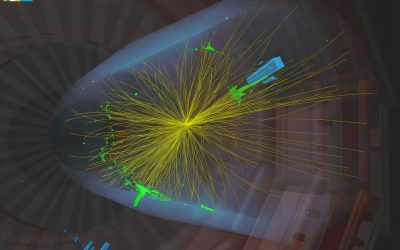All-solid-state lithium metal batteries (LMBs) are promising energy storage solutions that incorporate a lithium metal anode and solid-state electrolytes (SSEs), as opposed to the liquid ones found in conventional lithium batteries. While solid-state LMBs could...
PHYS.ORG
Active particles reorganize 3D gels into denser porous structures, study shows
Colloidal gels are complex systems made up of microscopic particles dispersed in a liquid, ultimately producing a semi-solid network. These materials have unique and advantageous properties that can be tuned using external forces, which have been the focus of various...
Compact on-chip polarimeter measures light polarization with high accuracy
Reliably measuring the polarization state of light is crucial for various technological applications, ranging from optical communication to biomedical imaging. Yet conventional polarimeters are made of bulky components, which makes them difficult to reduce in size and...
Optical spring enables programmable defect mode in new mechanical crystal
Mechanical crystals, also known as phononic crystals, are materials that can control the propagation of vibrations or sound waves, just like photonic crystals control the flow of light. The introduction of defects in these crystals (i.e., intentional disruptions in...
Pioneering approach expands possibilities for measuring quantum geometry in solids
Understanding and reliably measuring the geometric properties of quantum states can shed new light on the intricate underpinning of various physical phenomena. The quantum geometric tensor (QGT) is a mathematical object that provides a detailed description of how...
Simple machine learning techniques can cut costs for quantum error mitigation while maintaining accuracy
Simple machine learning techniques can cut costs for quantum error mitigation while maintaining accuracy
Can deep learning techniques predict sudden state transitions in nonlinear dynamical systems?
Nonlinear dynamical systems are systems that can undergo sudden shifts not due to changes in their state or stability, but in response to the rate at which external conditions or parameters change. These sudden shifts, known as noise-induced and rate-induced tipping,...
2D materials boost p-type transistor performance, paving way for future tech
After dominating the electronics industry for decades, conventional silicon-based transistors are gradually approaching their limits, which is preventing engineers from further reducing their size without affecting their performance. To continue advancing portable...
Physicists introduce approach to control wave patterns via fluid flows
The reliable control of traveling waves emerging from the coupling of oscillations and diffusion in physical, chemical and biological systems is a long-standing challenge within the physics community. Effective approaches to control these waves help to improve the...
The first search for soft unclustered energy patterns in proton–proton collisions at 13TeV
A key objective of many physics studies is to experimentally observe exotic phenomena beyond the Standard Model (SM) that are predicted by theoretical models. These include hidden valley models, which predict the existence of a dark sector in which particles and...










